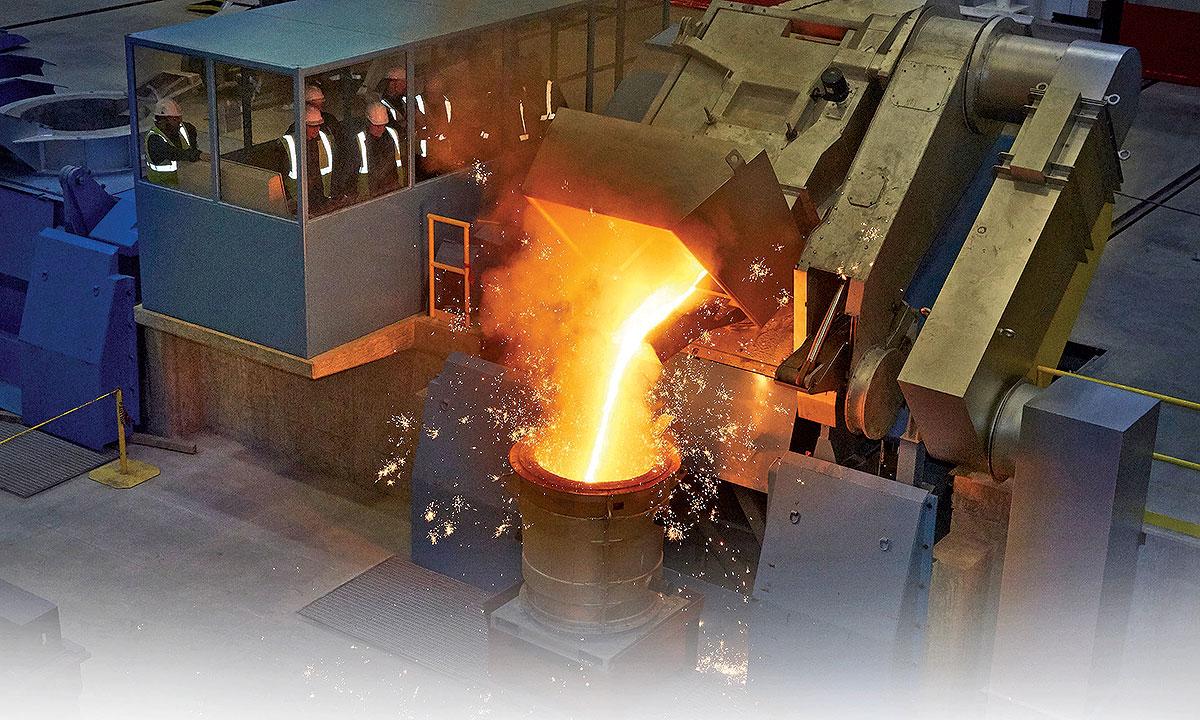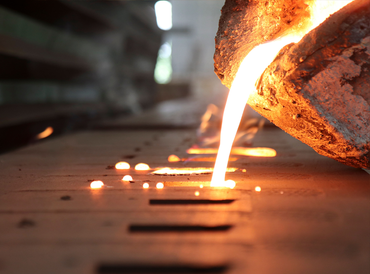Next generation of Metal Foundry production and innovation
Wiki Article
Discover the Cutting-edge Strategies Utilized in a Metal Foundry for Superior Casting Outcomes
In today's competitive production landscape, metal foundries are significantly taking on ingenious methods to boost casting results - Metal Foundry. Advanced computer system simulations permit specific modeling of molten metal actions, while 3D printing allows rapid production of intricate molds. Additionally, environmentally friendly products and automation improve operations. These developments assure substantial renovations in efficiency and quality assurance. The effect of these technologies on sustainability and manufacturing methods continues to be to be totally checked out.Advanced Computer System Simulations in Metal Casting
Advanced computer system simulations have changed the metal spreading process by enhancing accuracy and efficiency. These innovative tools enable engineers to produce online models of actors elements, allowing them to anticipate the actions and evaluate of molten metal during the casting stage. By replicating numerous parameters such as temperature level, circulation rate, and air conditioning rates, suppliers can recognize prospective issues before physical production starts.This positive approach minimizes waste and decreases costly errors, inevitably causing enhanced item quality. Furthermore, simulations promote the optimization of mold and mildew layouts, making sure that they satisfy the specific demands of each job. The combination of computational fluid characteristics (CFD) and limited component evaluation (FEA) further adds to the accuracy of these simulations, providing understandings that were formerly unattainable. Therefore, advanced computer simulations have come to be a crucial part of modern metal foundries, considerably advancing the market's abilities.
3D Printing for Mold And Mildews and Patterns
3D printing has actually become a groundbreaking method for developing molds and patterns in the metal foundry industry. This technology allows the quick manufacturing of intricate geometries that traditional production approaches battle to achieve. By utilizing additive production, foundries can develop elaborate designs with lowered lead times and product waste. The capacity to generate mold and mildews as needed enables higher flexibility in style versions, assisting in faster prototyping and alterations.3D printing can utilize a selection of materials, consisting of metals and plastics, tailored to details casting needs. This flexibility boosts the accuracy of mold and mildews, causing remarkable casting end results with boosted surface area coatings. Furthermore, the reduction in the variety of components needed simplifies setting up processes, further enhancing manufacturing performance. As foundries remain to embrace 3D printing, they are poised to redefine market standards, leading the means for technology and enhanced productivity in metal spreading procedures.
Eco-Friendly Materials and Processes
As the metal foundry industry faces increasing stress to reduce its ecological impact, the fostering of environmentally friendly materials and procedures has become essential. Shops are now discovering lasting alternatives to typical products, such as making use of recycled metals and bio-based binders. These products not only decrease waste however also reduced power intake during manufacturing.Additionally, improvements in sand casting methods have actually brought about using artificial sands that are much less unsafe to the environment. Foundries are additionally applying cutting-edge procedures like molten metal therapy that reduces discharges and improves the high quality of cast products.
Moreover, water-based finishings have actually replaced harmful solvents, promoting a safer work setting (Aluminum Foundry). By integrating these green methods, metal foundries can substantially lower their eco-friendly influence while maintaining top quality casting outcomes. This shift not only benefits the atmosphere but likewise lines up with the growing customer need for lasting production remedies
Automation and Robotics in Foundry Operations
While the metal foundry sector embraces innovation, the integration of automation and robotics is changing procedures greatly. Automated systems enhance processes such as mold and mildew production, metal putting, and casting completing, significantly enhancing efficiency. Robotics assist in the handling of heavy materials, decreasing the risk of work environment injuries and guaranteeing much safer settings.
Additionally, making use of automated guided vehicles (AGVs) optimizes material transport within centers, ensuring timely distribution of components to proper workstations. By applying these technologies, foundries can adapt to fluctuating demands with greater dexterity, ultimately leading to enhanced success and competitiveness in the market. As automation and robotics remain to evolve, they hold the prospective to redefine conventional foundry methods and drive more improvements in casting techniques.
Real-Time Surveillance and Quality Assurance Techniques
The improvements in automation and robotics have check here actually led the way for extra advanced strategies to quality guarantee in metal foundries. Real-time monitoring systems utilize innovative sensors and data analytics to track vital criteria throughout the casting process. These systems constantly examine variables such as temperature level, pressure, and product composition, enabling instant detection of deviations from established criteria.Quality control methods currently include artificial intelligence algorithms that examine historical information to forecast prospective issues prior to they occur. This positive technique decreases waste and improves overall production performance. Additionally, integrated comments loops enable for rapid modifications, making certain that each casting meets strict quality requirements.
The application of digital doubles-- digital reproductions of physical properties-- has also changed quality assurance, permitting engineers to imitate and maximize processes in real-time. Together, these ingenious strategies substantially improve the integrity and high quality of castings, establishing brand-new market requirements in metal foundry operations.
Frequently Asked Questions
What Types of Metals Are Commonly Cast in Factories?
Generally cast metals in foundries include light weight aluminum, brass, bronze, and iron. Each metal shows one-of-a-kind residential or commercial properties, making them appropriate for different applications, such as automotive components, equipment, and imaginative sculptures, boosting their convenience in manufacturing.
The length of time Does the Casting Refine Commonly Take?
The spreading process commonly takes a number of hours to days, depending upon variables such as the intricacy of the mold and mildew, sort of metal utilized, and air conditioning needs. Each phase influences the overall duration noticeably.What Security Measures Are in Place for Foundry Employees?

Exactly how Are Flaws in Castings Identified and Addressed?
Defects in castings are determined through aesthetic inspections and non-destructive screening methods. When detected, foundry workers resolve them by refining processes, changing material make-ups, and carrying out corrective procedures to ensure top quality and compliance with requirements.What Is the Expense Variety for Metal Casting Solutions?
The cost variety for metal casting Check Out Your URL services usually ranges $1 to $10 per extra pound, depending on elements such as product kind, complexity of the style, and production volume, influencing general prices substantially.In today's affordable manufacturing landscape, metal foundries are significantly adopting ingenious techniques to improve spreading outcomes. look at this website As the metal foundry market encounters boosting pressure to reduce its environmental footprint, the adoption of eco-friendly materials and processes has actually become necessary. Foundries are now discovering sustainable choices to standard products, such as using bio-based binders and recycled metals. By integrating these eco-friendly techniques, metal foundries can noticeably lower their environmental effect while keeping premium spreading outcomes. The innovations in automation and robotics have actually led the way for more sophisticated strategies to high quality guarantee in metal foundries.
Report this wiki page